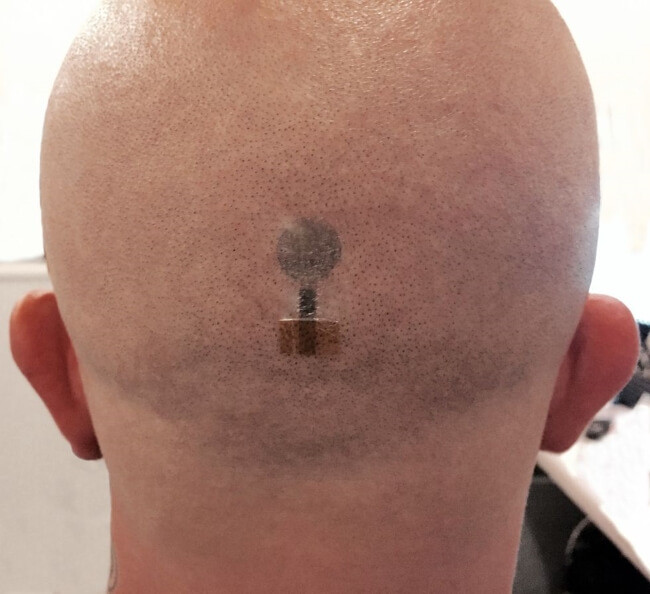Digital Tattoos: The Wearable Tech of the Future for Health Monitoring
| 22-05-2020 | By Moe Long
Where once tattoos were taboo and carried a stigma, getting inked now is pretty commonplace. Body art may even be considered mainstream. The United States alone boasts a whopping 20,000 tattoo parlours, with 36% of Americans between the ages of 18 and 29 having at least one tat. A 2019 survey found that more Americans in 2019 had tattoos than in early 2012. In terms of global ink, an international survey conducted found the highest number of respondents with at least one tattoo lived in Italy, with Sweden, the US, Australia, and Argentina following. And around 17% of those with tats regret them, usually because it's the name of another person. Maybe avoid penning a partner's name on yourself in anything other than henna, as who knows if or when they'll become your ex. But tattoos aren't just for style or shocking your parents. Instead, tattoos are now widely used in the medical community. From tattoo electrodes to digital tats, here's how tattoos are being used for medical purposes!
The History of Tattoos
While body ink has become more prevalent in recent years, tattoos have endured a rich culture. Egyptian mummies were discovered dating back to c. 2000 B.C., and there's a famous 5,200-year-old frozen mummy dubbed the Iceman with dots and crosses on the lower back, right knee, and right ankle areas. The reason for early tattoos is unclear, although there's speculation that tats originated as therapeutic rather than cosmetic. Later, around 450 BC, Grecian writer Herodotus described tattoos as markers of nobility. And historically, tats were even employed as markers branding individuals as members of various sects such as religious groups.
Tattoos in Medicine - E-Tattoos as Healthcare Wearables
Although many tattoos are purely for cosmetic purposes, digital tattoos or e-tattoos have a medical purpose. Similar in nature to temporary tattoos, e-tats are applied by first getting them damp, then holding them to a patch of skin. After that, a digital tattoo will remain for a few days before it rubs off. However, these e-tattoos aren't merely decorative. Instead, digital tats may monitor blood pressure, heart rate, blood sugar levels, or hydration.
Essentially, an e-tattoo is a wearable device. But unlike most fitness trackers where sensors such as a heart rate monitor are built into a wrist-based watch or on a chest strap, e-tattoos instead hold all electronics in a small form factor. Digital tats are comprised of tiny, flexible electronic components like conductive ink. Many are built with a liquid metal alloy for printing incredibly small circuitry. Common healthcare wearable tattoo materials include graphene, gold nanorods, and different polymers. Since they're directly on the skin, digital tattoos may even be more accurate in their biomarker readings than traditional wearable devices.

Printed Tattoo Electrodes can Measure Brain Signals
Prosthetics witnessed a significant advancement with prosthetics capable of interfacing with the human brain. Likewise, printed e-tattoo electrodes were able to record brain signal measurements. That's a major leap in medical technology and a huge leap forward in tattoo tech. Head of the Laboratory of Applied Materials for Printed and Soft electronics (LAMPSe) at the Institute of Solid State Physics at Graz University of Technology Francesco Greco developed tattoo electrodes alongside a team of Italian scientists in 2015. A breakthrough came in 2018 with conductive polymers then printed with an inkjet printer on tattoo paper before being affixed to the skin. Boasting a mere 700-800 nanometer thickness, which is roughly 100 times thinner than the average human hair strand, these wearable tech tats easily conform to the human body. Whereas gel electrodes may dry out, these tattoos instead are dry, requiring no liquid for conductivity. What's more, they're virtually immune to interference, even by hairs growing out of the skin underneath. These dry electrode medical tattoos are great for long-term deployment since they only require conductive polymers.
E-Tattoo Applications
MC10, a Massachusetts, United States-based company developed a digital tattoo capable of monitoring muscle performance, heart activity, and movement. A South Korean research team engineered a glucose monitoring patch which can even administer medicine. It's capable of tracking body temperature as well as the pH of the sweat in individuals with Type 2 diabetes. Then, this data is sent to a smartphone app, and a small needle in the patch administers a dosage of medicine.
Harvard University and Massachusetts Institute of Technology (MIT) researchers created a colour-changing e-tattoo dubbed the Dermal Abyss. These biosensitive inks can switch colours based on body changes and may take measurements of sodium, pH, and glucose. Moreover, this research team concocted a green ink that's colour intensifies in tandem with rising sodium levels, generally a hydration warning. And a different green ink becomes brown with rising glucose levels, a helpful monitoring tool for diabetes patients.
The researchers highlighted the need to expand the range of colours and intensities of biosensors, optimise their detection range and selectivity, and characterise their safety profile through in vitro and in vivo studies before implantation. While e-tattoos have shown promise in monitoring various biomarkers and tracking medical conditions, their effectiveness and safety still require further research and development.
Get Inked - The Future of E-Medicine and Digital Tattoos
Although many tattoos are purely for cosmetic purposes, digital tattoos or e-tattoos have a medical purpose. According to a publication by MIT researchers Katia Vega, Xin Liu, Viirj Kan, Nick Barry, Ali Yetisen, and Nan Jiang, the DermalAbyss project was a proof-of-concept that explored the possibilities of using biosensors as a tattooed interface. The project involved replacing traditional tattoo inks with biosensors that change colour in response to variations in interstitial fluid, creating an interactive display on the body's surface.
The biosensors were able to react to three pieces of biochemical information in body fluid, including pH, glucose, and sodium. The researchers found that the biosensors could be used for applications in continuously monitoring medical diagnostics, quantified self, and data encoding in the body.
However, the study also noted that current biosensors still have limitations that future researchers should address before implantation. Despite the potential of using biosensors as a tattooed interface, the DermalAbyss project was a research project, and there are currently no plans to develop it as a product or pursue clinical trials.

